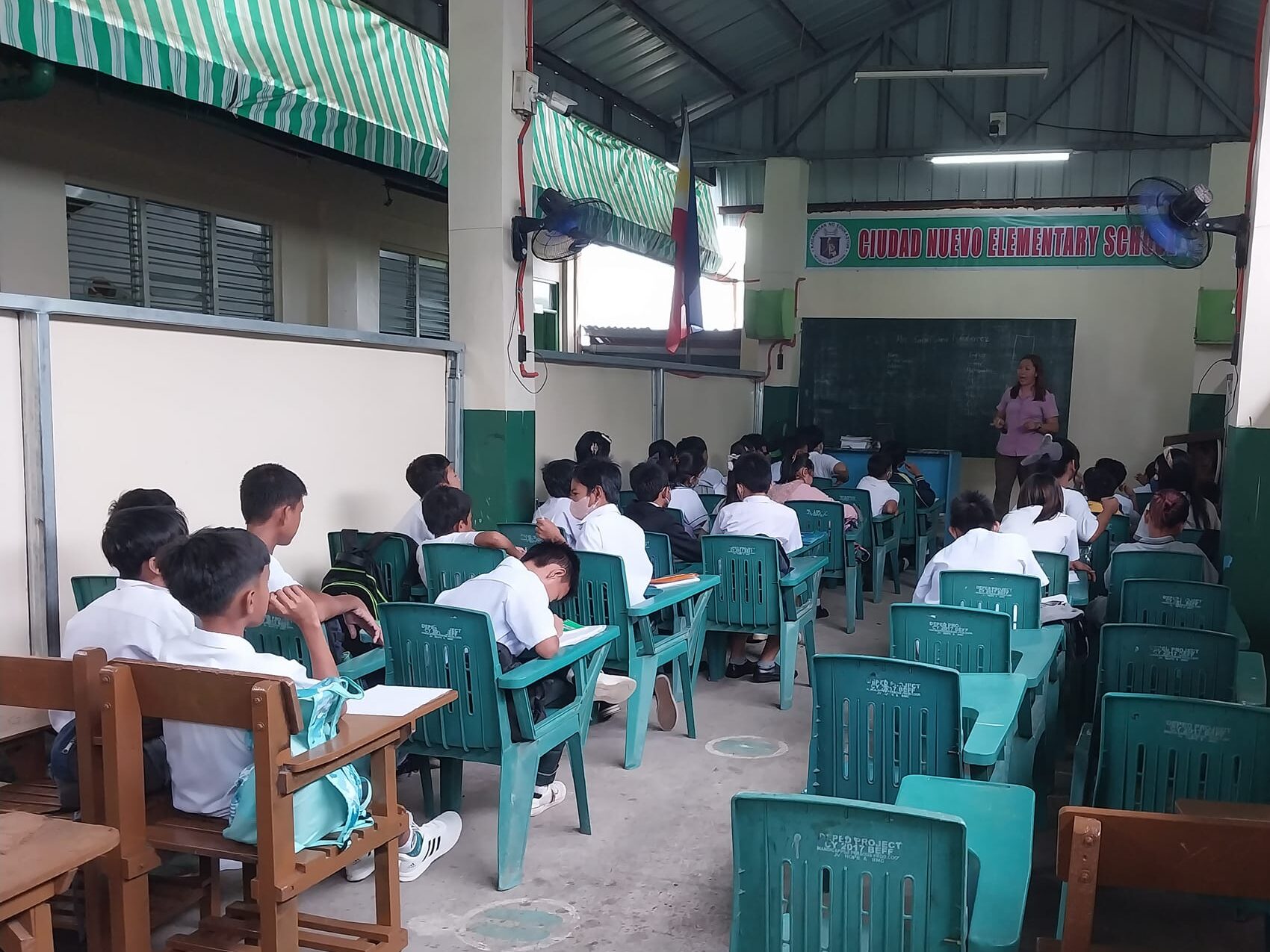DepEd eyes land purchase in Naic, Cavite to ease classroom shortage amid enrollment surge

A makeshift classroom was set up to accommodate the surge of enrollees, driven by relocation efforts that have brought numerous families to Naic. Photo from the DepEd Tayo Ciudad Nuevo de Naic NHS – Cavite Province
Education Secretary Sonny Angara on Tuesday said the Department of Education (DepEd) is eyeing the purchase of land in Naic, Cavite to address the worsening classroom shortage caused by the rapid influx of relocated families from Metro Manila.
Angara told reporters that while the agency is ready to construct additional learning facilities, it is constrained by the lack of publicly owned land.
He cited Ciudad Nuevo de Naic Elementary School, where only 500 square meters of land is owned by the department. As a result, the school has had to rely on makeshift classrooms and tented learning spaces, which are vulnerable to the elements.
“The tents and other makeshift structures being used as classrooms are on private property. Maybe the government can lease or buy the land so we can start construction. We’re ready to build right away,” Angara said.
“At the very least, we need proper temporary learning spaces so students aren’t getting wet and their learning isn’t disrupted,” he added.
Naic has emerged as one of the major relocation hubs for informal settler families from the National Capital Region, placing immense pressure on local school infrastructure. “Our data shows an almost 900 percent increase in enrollment in some schools here. Classroom construction simply can’t keep up with that kind of growth,” Angara said.
He noted that DepEd needs to build more than 30 classrooms to accommodate the surge in enrollees.
Due to the overcrowding, some schools in the municipality have been forced to adopt triple-shift schedules to serve all students.
As a case in point, the Second Congressional Commission on Education (EDCOM 2) earlier cited Ciudad Nuevo de Naic National High School, which operated six shifts daily from morning to evening during the height of the pandemic.
A local DepEd official told The Edlines that while the situation has since improved, some challenges remain. “In fact, most schools in Naic are now implementing only double shifts. Ciudad Nuevo ES was a special case due to another wave of enrollees following a new round of relocation in April this year,” the official said.
The official added that many of the new students came from Metro Manila and were children of families who purchased government-subsidized housing in the area.
Meanwhile, Angara underscored the need for stronger inter-agency coordination, particularly when implementing relocation programs.
“If the government is going to relocate families, DepEd and the Department of Health should be informed well in advance. That way, we can ensure the necessary infrastructure—schools, daycare centers, health facilities—are in place,” he said.
“It’s difficult to build a community if you don’t include the most basic institutions,” Angara added.
He also stressed that the issue of land availability for school buildings extends beyond Naic. “The difficulty of finding buildable space is a problem we face not just here, but also in many highly urbanized areas across the country,” he said.
“Because we don’t have the funds to buy land, we also don’t have the power to expropriate. Only the national or local governments have that authority,” Angara said.


